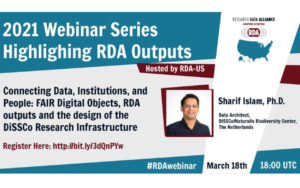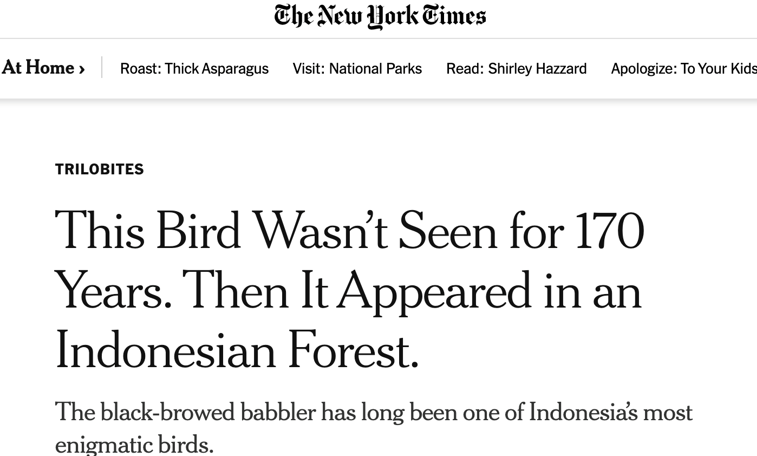
18 March 2021
Scroll down to watch the webinar “Connecting Data, Institutions and People: FAIR Digital Objects, RDA outputs and the design of the DiSSCo Research Infrastructure” conducted by DiSSCo’s Data Architect, Sharif Islam for the Research Data Alliance (RDA) United States. The session provided an overview of the architectural design of DiSSCo, focusing on the incorporation of the FAIR Digital Object (FDO) concept as one of its cornerstones. It also showcased DiSSCo as an example of how the RDA outputs are contributing to the design of large-scale infrastructures.

Lethargic data vs Dynamic data: DiSSCo’s FAIR Digital Object.
A recent article by the New York Times (see above) served to anchor the conversation and present DiSSCo’s concept of FAIR Digital Object –in which Digital Collection objects and Digital Specimen objects are the principal object types- as a way to bind all critical information about an entity in one place and create a new kind of actionable, meaningful and technology independent object.
DiSSCo understand the Digital Specimen (DS) as a “digital twin” of a physical specimen. It goes beyond the mere visual representation of the physical specimen insofar that it is processable, actionable and bears a full set of online FAIR data from different sources (morphological info, genomic info, biochemical info, taxonomic, ecological info…) derived from the physical specimen and made available through digitization, analytical and computation methods.

photo: JSON representation of DiSSCo’s idea of Digital Specimen based on the NY Times example (see above).
“There are a lot of ethical and legal issues around extinct and endangered species data (…) The community involved in DiSSCo is aware that our technical decisions about linking and opening data need to consider these things very carefully. It is a double-edge sword: for understanding endangered and extinct species you need to collect the data but at the same time this might endanger not just the species but also the local community as well.” Sharif Islam (DiSSCo Data Architect).
Integrating RDA recommendations and outputs in large-scale projects
The outputs of several RDA Interest and Working Groups as well as various global discussions around FAIR principles were instrumental in the decision to incorporate FDOs as one of the building blocks for the design of DiSSCo RI.
The webinar addressed recommendations and outputs from five RDA working groups:
- The Data Foundation and Terminology working group / Data Fabric and Terminology working group
- The PID Kernel working group
- The Research Data Collections working group
- The RDA / TDWG Metadata attribution working group.
- The FAIR data maturity model working group
The talk also addressed the ongoing conversation around the convergence of the Digital Specimen concept proposed by DiSSCo and the Extended Specimen (proposed by Biological Collections Network in the U.S. BCON).
Learn more about DiSSCo’s technical infrastructure here.